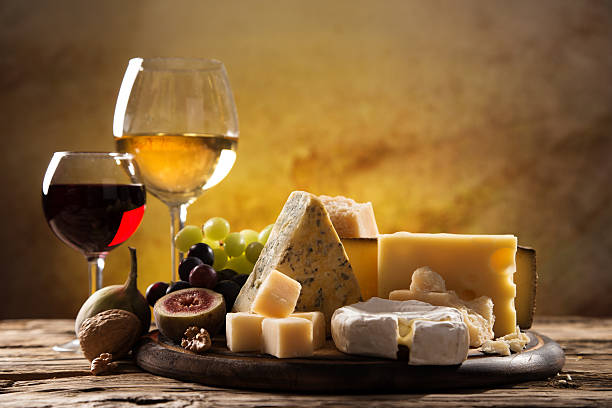In the world of gastronomy, the terms “terroir” and “taste” are often revered as fundamental elements that contribute to the richness and diversity of culinary experiences. Terroir, a French word, refers to the unique combination of geography, climate, soil, and traditional practices that influence the characteristics of agricultural products, particularly grapes used in winemaking. Taste, on the other hand, is a subjective sensory perception that results from a complex interplay of flavors, aromas, and textures. Together, terroir and taste encapsulate the essence of what makes food and drink distinctive, reflecting the cultural and environmental nuances of their origin.
Terroir Defined:
Terroir is a concept deeply rooted in the agricultural and viticultural traditions of France. Originally associated with wine, it has now expanded to encompass various food products, including cheese, coffee, and even chocolate. The term emphasizes the impact of a specific location’s environmental factors on the flavor profile of the final product.
- Geography: The geographical location plays a pivotal role in terroir. Factors such as altitude, latitude, and proximity to bodies of water contribute to the unique growing conditions for crops. For instance, grapes grown in the rolling hills of Bordeaux will produce wines with different characteristics than those from the sunny slopes of California.
- Climate: The prevailing environment of a region, including temperature, humidity, and precipitation, significantly influences the growth and maturation of crops. Grapes, for example, thrive in specific temperature ranges, and the climate of a vineyard can shape the flavor complexity of the resulting wine.
- Soil: The soil composition of a particular area affects the nutrient content available to plants and contributes distinct mineral flavors to the final product. The renowned Burgundy wines owe much of their distinctiveness to the limestone-rich soils, which impart unique characteristics to the grapes.
- Traditional Practices: The cultural and historical practices passed down through generations contribute to terroir. Winemaking techniques, farming methods, and even the choice of grape varieties are part of the terroir equation. These practices are integral to preserving the authenticity and uniqueness of a product.
Taste: A Personal Journey of Perception:
While terroir lays the foundation for the distinctive qualities of food and drink, taste is a highly individual and subjective experience. It involves the complex interplay of the five senses, with flavor being a composite of taste, aroma, and texture. Taste is not only influenced by the inherent qualities of the ingredients but also by personal preferences, cultural background, and culinary exposure.
- Taste Perception: The human palate can detect five primary tastes – sweet, salty, sour, bitter, and umami. However, taste perception goes beyond these basic sensations. Aromas contribute significantly to the overall flavor experience, and the olfactory senses play a crucial role in distinguishing nuances in taste.
- Cultural Influences: Taste preferences are deeply rooted in cultural backgrounds and societal norms. What may be considered a delicacy in one culture might be an acquired taste in another. Cultural diversity in cuisine celebrates the kaleidoscope of flavors, textures, and ingredients that make each culinary tradition unique.
- Personal Preferences: Individual taste preferences are shaped by a myriad of factors, including genetics, previous culinary experiences, and exposure to diverse cuisines. Some individuals may gravitate towards bold, spicy flavors, while others may prefer subtle and delicate tastes.
Terroir and Taste in Harmony:
The intersection of terroir and taste is where the true magic of gastronomy happens. When food and drink are crafted with a deep appreciation for the inherent qualities of the ingredients and the unique environmental factors that shaped them, the result is a celebration of diversity and authenticity.
- Wine: The world of wine provides a perfect canvas to explore the harmonious relationship between terroir and taste. Each wine region, from the Old World vineyards of Europe to the New World landscapes of Australia and South America, imparts distinctive qualities to the wines produced. Varietals such as Chardonnay and Pinot Noir express themselves differently based on their terroir, creating a fascinating array of flavors and aromas.
- Cheese: Terroir is not limited to wine; it extends to cheese production as well. The milk’s origin, the animal’s diet, and the environmental conditions all contribute to the final flavor profile of the cheese. A French Roquefort, with its distinctive blue veins, tells a story of the limestone caves where it matures. At the same time, an Italian Parmigiano-Reggiano reflects the rich pastures of the Emilia-Romagna region.
- Coffee: The world of coffee lovers embraces the concept of terroir, recognizing that the altitude, soil, and climate of coffee plantations profoundly influence the beans’ flavor. Ethiopian coffee, grown at high altitudes, offers floral and fruity notes, while Colombian coffee, with its ideal equatorial climate, is known for its well-balanced acidity.
Terroir and taste form the essence of gastronomy, creating a tapestry of flavors that celebrate the rich diversity of food and drink. The unique combination of geography, climate, soil, and traditional practices gives rise to products that tell a story of their origin. Taste, as a subjective and personal experience, adds another layer to this narrative, reflecting individual preferences and cultural influences.
In a world that often seeks uniformity, terroir, and taste invite us to embrace and celebrate differences. Whether sipping a glass of wine, savoring a piece of cheese or enjoying a cup of coffee, each culinary experience becomes a journey through the landscapes and traditions that shape the flavors on our plates. As we indulge in these diverse and nuanced creations, we not only satisfy our palates but also connect with the roots of the food and drink that bring people together across cultures and continents.



